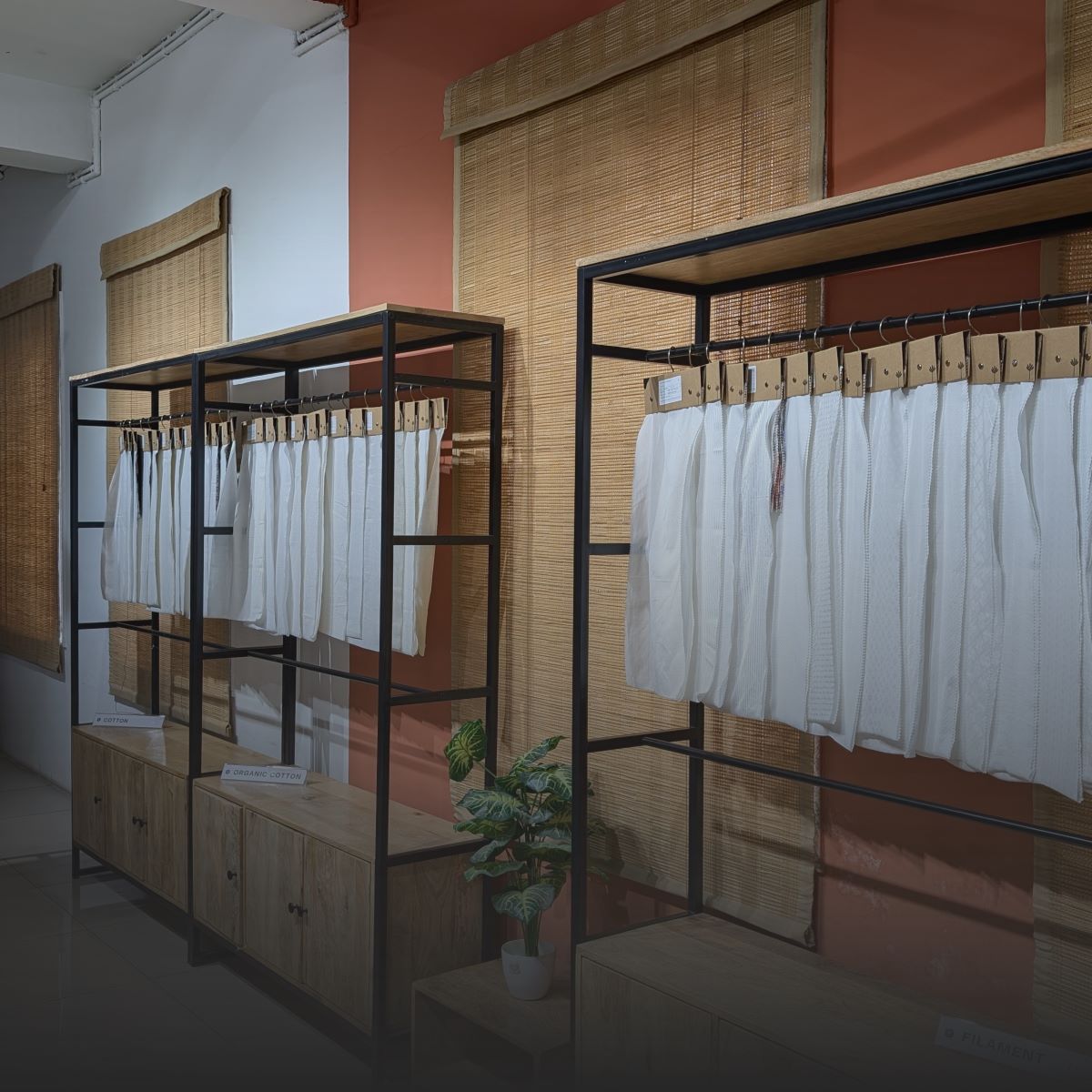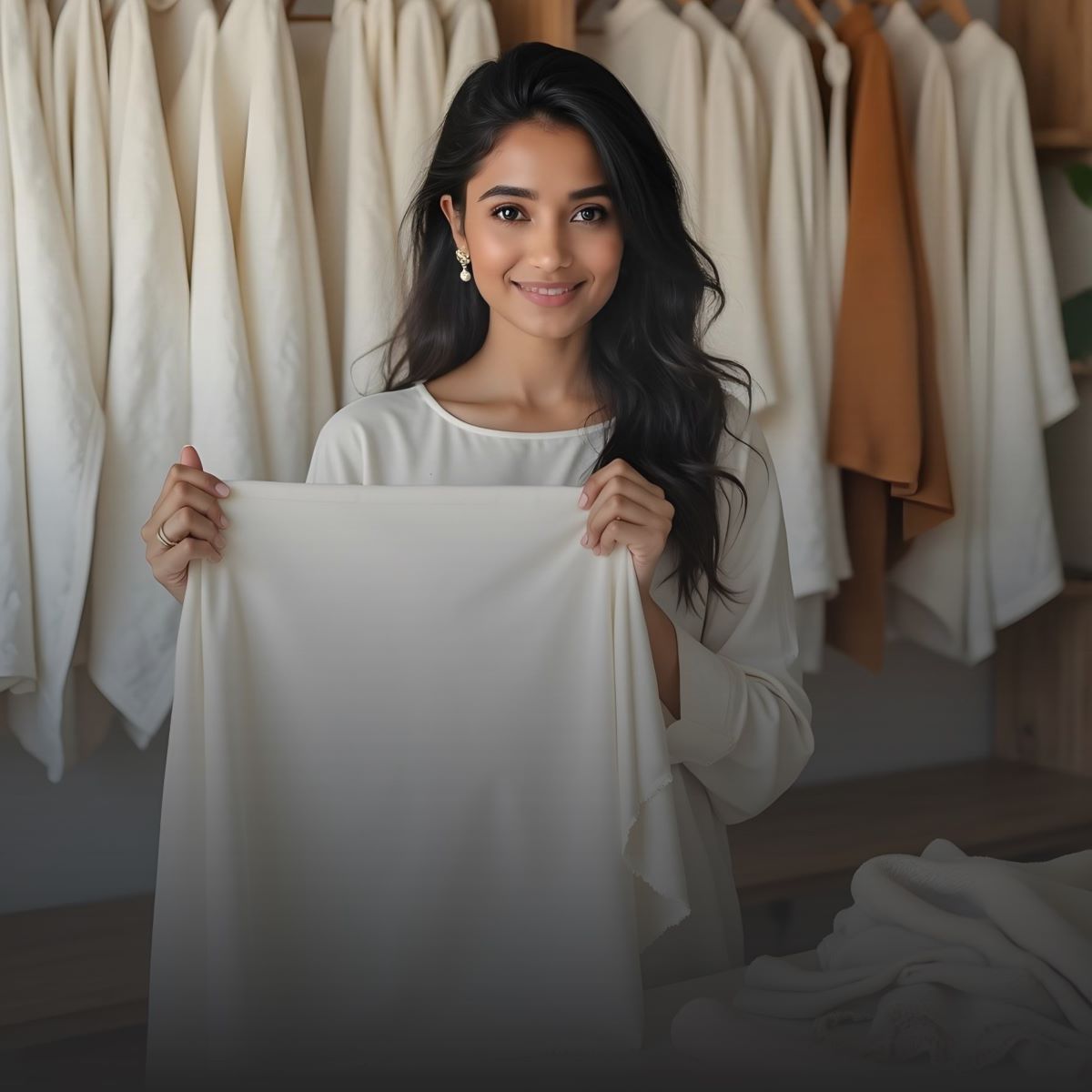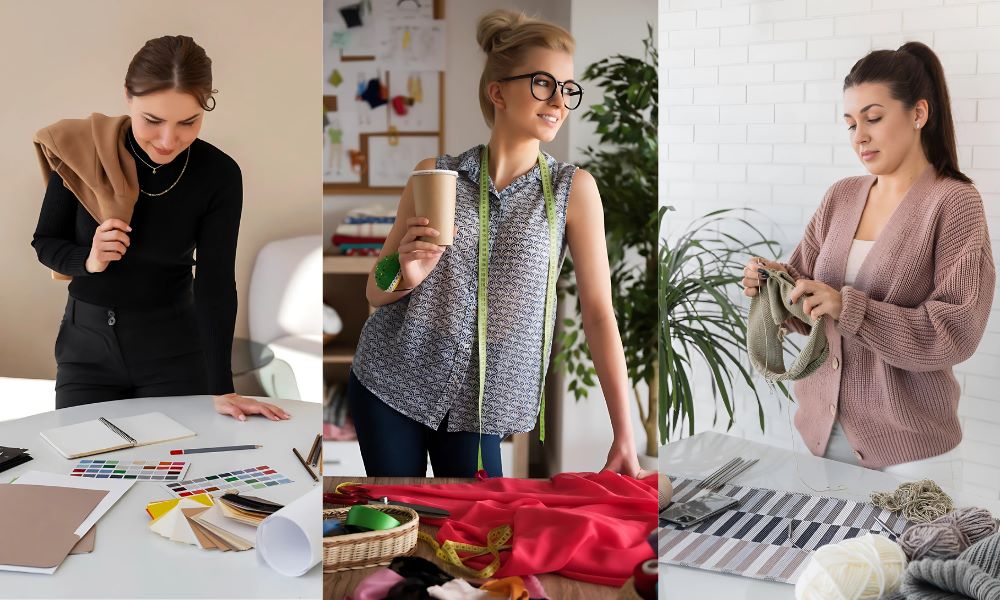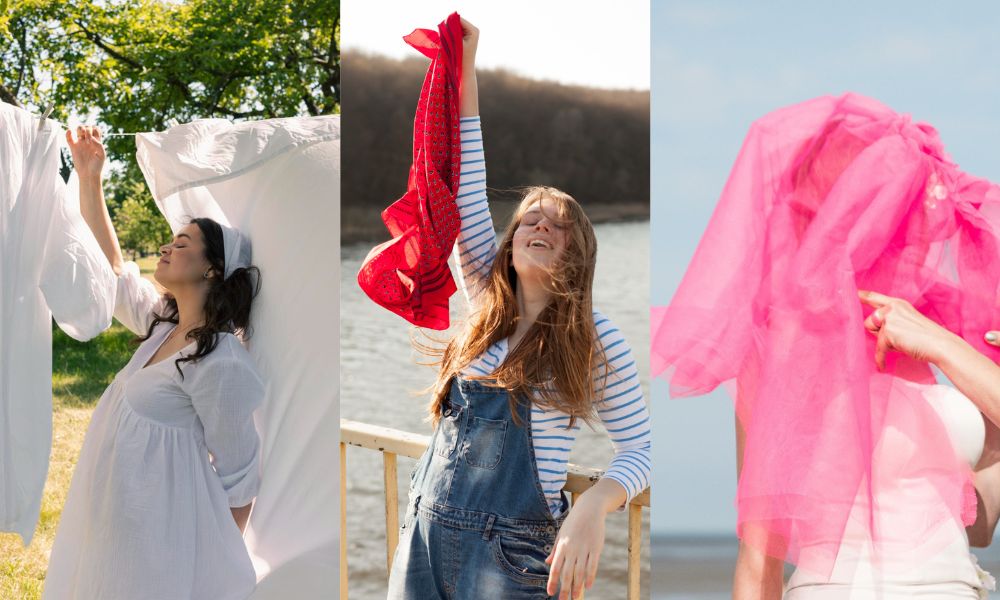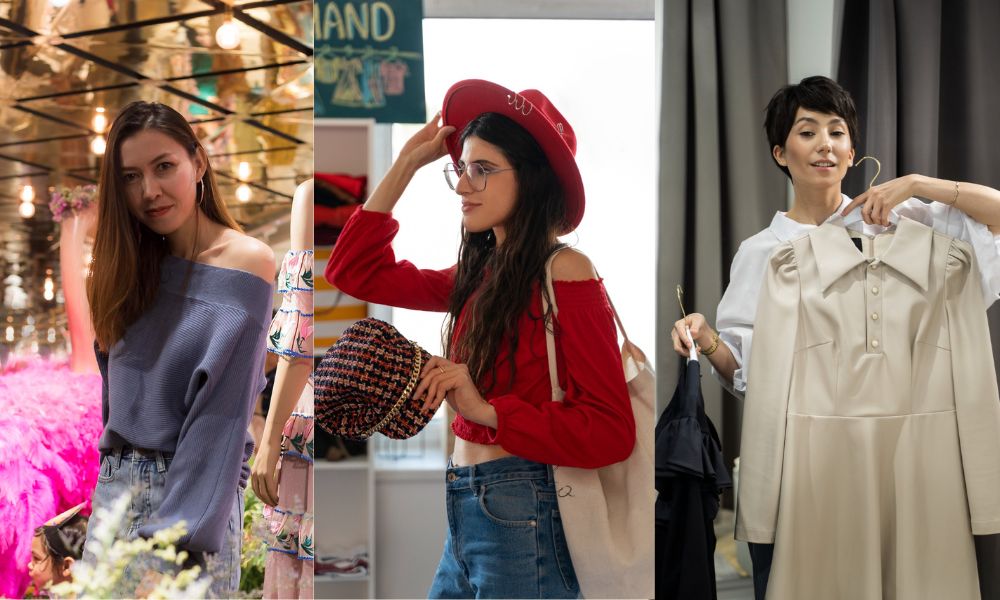Fashion changes fast. Trends come and go. What stays consistent is the need for the right fabric.
The fabric you choose shapes how your collection looks, feels and fits. It affects quality, comfort and customer experience.
If you get it wrong, your designs may not work the way you planned. If you get it right, your clothing stands out.
This guide will help you make better fabric choices. You'll learn how to match fabric with your design goals, test materials and find trusted suppliers.
Whether you're starting a new clothing line or growing your current one, the right fabric is important.
1. Understand Your Fashion Line's Needs

If you want to choose the right fabric, then first of all, you need to understand your brand and customers. The fabric you choose should fit your style, your buyers and what's popular in the market.
Define Your Brand Style
Your fabric should reflect your brand's identity. Think about what you stand for:
- Casual wear – Cotton, linen and jersey for everyday comfort
- Luxury fashion – Silk, velvet and satin for a refined look
-
Sustainable clothing – Organic cotton , hemp and Tencel for eco-conscious buyers
Know Your Customers
Who will wear your designs? Their lifestyle, budget and fashion preferences guide fabric choices. A clear customer profile helps you create what they want.
Think About Seasons and Trends
Fabrics must suit the climate and current styles.
- Warm seasons – Lightweight fabrics like chiffon, cotton and rayon
- Cold seasons – Heavier fabrics like wool, fleece and corduroy
-
Trending styles – Keep up with patterns, textures and popular colors
By selecting fabrics that match your brand, customers and trends, you build a collection that sells.
2. Key Factors to Consider When Choosing Fabric

Fabric Type
Fabrics are either natural or synthetic. Each has its benefits:
- Natural fabrics are soft, breathable and eco-friendly.
- Synthetic fabrics (polyester, nylon, spandex) are strong, wrinkle-free and easy to maintain.
- Blended fabrics mix both for better comfort and durability.
Texture and Drape
- Soft fabrics like chiffon and silk create flowy designs.
- Stiff fabrics like denim and canvas give a structured look.
- Heavy fabrics drape less, while light fabrics move easily.
Durability
Good quality fabric lasts longer. Look for:
- Tightly woven fabrics that don't tear easily.
- No pilling (tiny fabric balls that appear after washing).
- No shrinkage or fading after washing.
Breathability and Comfort
- Cotton and linen keep you cool in warm weather.
- Wool and fleece keep you warm in cold weather.
- Moisture-wicking fabrics like polyester blends are suitable for sportswear.
Color and Print
- Smooth fabrics like satin make prints stand out.
- Textured fabrics can distort prints.
- Some fabrics fade faster than others, so choose wisely.
Picking the right fabric makes your clothes look better, feel comfortable and last longer.
3. Sustainable and Ethical Fabric Choices

Sustainable fabrics help reduce pollution, save natural resources and support fair working conditions. Choosing eco-friendly materials makes fashion more responsible.
Natural Sustainable Fabrics
- Organic Cotton – Grown without harmful chemicals and uses less water than regular cotton. Certified by GOTS and Fair Trade.
- Hemp – Requires little water and improves soil health. Absorbs carbon from the air.
- Linen – Made from flax plants, it needs few chemicals and is lightweight and breathable.
- Bamboo Linen – Sustainable when processed naturally. Soft and durable.
- Cork – Harvested from cork trees without cutting them down. It helps absorb carbon and protect forests.
Recycled Fabrics
- Recycled Cotton – Made from old fabric scraps, reducing waste. Certified by GRS and OEKOTEX.
- Econyl (Recycled Nylon) – Created from fishing nets and plastic waste. Used in swimwear and activewear.
-
Recycled Polyester (PET) – Made from plastic bottles, reducing plastic pollution.
Innovative Plant-Based Fabrics
- Pinatex – Made from pineapple leaves. A natural alternative to leather.
- TENCEL™ & Modal – Soft, breathable fabrics made from wood pulp. It is produced using a process that recycles water and chemicals.
Important Certifications
- GOTS & USDA Organic – Ensures organic production.
- Fair Trade – Guarantees fair wages and ethical working conditions.
- OEKO-TEX – Confirms the fabric is free from harmful chemicals.
- FSC (Forest Stewardship Council) – Verifies responsible sourcing of wood-based fabrics.
- GRS (Global Recycle Standard) – Certifies recycled materials.
Why Choose Sustainable Fabrics?
- Uses less water, energy and chemicals.
- Reduces waste with biodegradable and recycled materials.
- Safer for the skin, free from toxic chemicals.
- Supports ethical working conditions and fair wages.
Choosing sustainable fabrics helps protect the environment and promotes ethical fashion.
4. Sourcing the Best Fabric for Your Fashion Line

Local vs. International Suppliers
Local Suppliers
- Easier communication
- Faster delivery
- Better support for small orders
International Suppliers
- More variety
- Lower prices for bulk
- Access to unique fabrics
Choose what suits your budget, timeline and design needs.
How to Check Fabric Quality Before Bulk Orders
- Ask for swatches.
- Test fabric stretch, weight and texture.
- Check color fastness and shrinkage.
- Review supplier ratings and samples.
Recommended Suppliers
-
Fabriclore (India): Great for wholesale, custom prints, natural and sustainable options.
-
Alibaba: Wide selection, but requires research for reliable sellers
-
SwatchOn (Korea): Trendy fabrics, small MOQs
-
Spoonflower (USA): Good for custom prints, mostly retail
-
Local markets: Useful for unique finds and quick purchases
Why Fabriclore is the Best Fabric Supplier for Fashion Designers and Clothing Brands
Fabriclore helps you find the right fabric easily.
You can pick from more than 300 fabric types like cotton, silk and eco-friendly options. You can buy plain fabric or get your own design printed.
They offer many printing and dyeing methods in one place, like digital printing, screen printing and hand block printing.
Each fabric is checked for quality, shrinkage and color before delivery.
If you’re starting a clothing brand, Fabriclore is a smart place to start.
5. Testing and Prototyping Your Fabrics

Before buying fabric in bulk, test it with samples and trial runs. This helps avoid mistakes and ensures your final product works well.
Sampling and Swatching
- Order small fabric swatches
- Check color, texture and stretch
- Stitch a bit to see how it sews
Making Sample Garments
- Create a basic version of your design
- Try it on to check the fit and drape
- See how the fabric looks when worn
Digital Prototypes
- Use software like Illustrator or CLO 3D
- Test prints, colors and design ideas
- Save time and fabric in the early stages
Physical Prototypes
- Make a full sample with your real fabric
- Test the stitching, fit and comfort
- Use real tools like sewing machines or cutters
Fabric Testing
- Shrink test: Wash to see if it shrinks
- Color test: Rub with water to check if the dye comes off
- Durability test: Stretch or rub to check for damage
6. Budgeting for Fabric Costs

Planning your fabric budget is a key part of building a fashion line. It helps you avoid overspending and keeps your pricing realistic.
1. Estimate Fabric Cost Per Garment
- Start with a sample garment.
- Measure how much fabric it uses.
- Multiply by the fabric’s price per meter or yard.
- Add 5–10% extra for wastage or mistakes.
Example:
If a shirt needs 2 meters and your fabric is ₹300 per meter, then the cost is ₹600. Add ₹60 for wastage = ₹660 total.
2. Watch for Hidden Costs
-
Shipping – Especially for international orders.
-
Import duties – Check local taxes on global suppliers.
-
Sampling – Costs of swatches, trial runs and small-batch printing.
-
Custom printing or dyeing – These services usually cost more.
3. Tips to Stay on Budget
- Buy in bulk to get better rates.
- Work with suppliers who offer low MOQs (like Fabriclore).
- Choose fabrics that fit multiple designs to reduce variety costs.
- Compare prices across local and online suppliers before you commit.
A clear budget helps you price your garments well and grow your business without surprises.
You Can Also Read if you want to know more : Why You Need a Fabric Consultant for Your New Fashion Lineup
Conclusion
Picking the right fabric is a big part of fashion design. It affects how your clothes look, feel and fit. A good fabric helps your design work well.
Start by knowing what your garment is for. Choose a fabric that matches the style, comfort and use. Always test your fabric first. Check how it shrinks, stretches and feels after washing.
Go for good quality and eco-friendly fabrics. Organic cotton, Tencel and hemp are great options. Look for fabric with trusted labels like GOTS or OEKO-TEX. If you need fabric in bulk, try reliable suppliers like Fabriclore.
Try new fabrics. Test different types and see what works best for your ideas. The more you explore, the better your designs will become.
Good fabric leads to great fashion. Keep learning and keep experimenting.
For More Information : Why Choose Indian Fabrics for Your US-Based Fashion Line?
We also happen to be a magnet for suggestions, and would love to catch yours….throw us yours on hello@fabriclore.com
